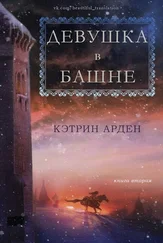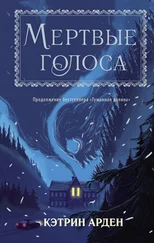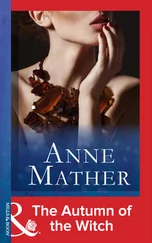MOSCOW (RUSSIAN: MOSKVA)—Currently the capital of the modern Russian Federation, Moscow was founded in the twelfth century by Prince Yury Dolgoruki. Long eclipsed by cities such as Vladimir, Tver, Suzdal, and Kiev, Moscow rose to prominence after the Mongol invasion, under the leadership of a series of competent and enterprising Rurikid princes.
MOSKVA RIVER—River along which Moscow was founded.
MUSCOVY—Derived from Latin Moscovia, from the original Russian appellation Moscov, the term refers to the Grand Duchy or Grand Principality of Moscow; for centuries, Muscovy was a common way to refer to Russia in the West. Originally Muscovy covered a relatively modest territory stretching north and east from Moscow, but from the late fourteenth to the early sixteenth century it grew enormously, until by 1505 it covered almost a million square miles.
NEGLINNAYA RIVER—Moscow was originally built on a hill between the Moskva and the Neglinnaya, and the two rivers formed a natural moat. The Neglinnaya is now an underground river in the city of Moscow.
OLEG OF RYAZAN—Also Oleg Ryazansky. The Grand Prince of Ryazan during the latter half of the fourteenth century. His role in the time leading up to the Battle of Kulikovo, and in the battle itself, is ambiguous. Some sources put him fully on the side of the Tatars. Others say he tried to play both sides, so as to come out ahead whoever won. He might have been the first one to bring word to Dmitrii that Mamai’s forces were advancing on Kulikovo; he might have delayed his own arrival at the battle and turned aside Mamai’s reinforcements to give Dmitrii a chance. He might have allowed his boyars to fight on the side of the Russians but hung back himself.
OTCHE NASH—Our Father, the opening phrase of the Lord’s Prayer in Old Church Slavonic. Even today, the prayer is generally memorized and said in this older form rather than in modern Russian.
OVEN—The Russian oven, or pech’, is an enormous construction that came into wide use in the fifteenth century for cooking, baking, and heating. A system of flues ensured even distribution of heat, and whole families would often sleep on top of the oven to keep warm during the winter.
PATENT—A term used in Russian historiography for official decrees of the Golden Horde. Every ruler of Rus’ had to have a patent, or yarlyk, from the Khan giving him the authority to rule. Jockeying for the patents of various cities made up a good deal of the intrigue between Russian princes from the thirteenth century on.
POLUDNITSA—Lady Midday, sister to Lady Midnight, who wanders the hayfields and causes heatstroke with her cutting shears.
POLUNOCHNITSA—Literally, midnight woman; Lady Midnight, a demon that comes out only at midnight and causes children’s nightmares. In folklore, she lives in a swamp, and there are many examples of charms sung by parents to send her back there. In The Winter of the Witch, this folkloric character is associated with Night, the servant of Baba Yaga in the fairy tale Vasilisa the Beautiful.
POSAD—An area adjoining, but not within, the fortified walls of a Russian town, often a center of trade. Over the centuries, the posad often evolved into an administrative center or a town in its own right.
POZHAR—Fire, bonfire; the name of the golden mare in The Winter of the Witch, who is also the firebird. You can see the root of her name in the Russian word for firebird, zhar-ptitsa.
RUBAKHA—A long-sleeved shift, the main undergarment for nearly all medieval Russian women, the only one consistently washed.
RUS’—The Rus’ were originally a Scandinavian people. In the ninth century C.E., at the invitation of warring Slavic and Finnic tribes, they established a ruling dynasty, the Rurikids, that eventually comprised a large swath of what are now Ukraine, Belarus, and western Russia. The territory they ruled was eventually named after them, as were the people living under their dynasty, which lasted from the ninth century to the death of Ivan IV in 1584.
RUSSIA—From the thirteenth through fifteenth centuries, there was no unified polity called Russia. Instead, the Rus’ lived under a disparate collection of rival princes (knyazey) who owed their ultimate allegiance to Mongol overlords. The word Russia did not come into common use until the seventeenth century. Thus, in the medieval context, the use of the word Russia, or the adjective Russian, refers to a swath of territory with a common culture and language, rather than a nation with a unified government. Hence the phrase “All the Russias” refers to these various states, rather than a unified whole.
SAPOGI—Short boots, generally made of multiple pieces of leather, with a rounded toe. In this era, they did not distinguish between left and right foot.
SARAFAN—A dress something like a jumper or pinafore, with shoulder straps, worn over a long-sleeved blouse. This garment actually came into common use only in the early fifteenth century; I included it in The Bear and the Nightingale slightly before its time because of how strongly this manner of dress evokes fairy-tale Russia to the Western reader.
SARAI—From the Persian word for “palace,” the capital city of the Golden Horde, originally built on the Akhtuba River and later relocated slightly to the north. Various princes of Rus’ would go to Sarai to do homage and receive patents from the Khan to rule their territories. At one point, Sarai was one of the largest cities in the medieval world, with a population of over half a million.
SERPUKHOV—Currently a town that sits about sixty miles south of Moscow. Originally founded during the reign of Dmitrii Ivanovich to protect Moscow’s southern approaches, and given to Dmitrii’s cousin Vladimir Andreevich (Olga’s husband in The Girl in the Tower ). Serpukhov did not get town status until the late fourteenth century. In The Girl in the Tower and The Winter of the Witch, Olga lives with her family in Moscow despite being the Princess of Serpukhov, because Serpukhov, at this time, consists of little more than trees, a garrison, and a few huts. The Prince of Serpukhov was the only lord in Muscovy who was not a vassal, i.e., was a prince in his own right and not subordinate to Moscow.
SNEGUROCHKA—Derived from the Russian sneg, snow, the Snow-Maiden, a character who appears in several Russian fairy tales. In The Winter of the Witch, it is also Morozko’s nickname for Vasya.
SOLOVEY—Nightingale; the name of Vasya’s bay stallion.
TEREM—The word refers both to the actual location where highborn women lived in Old Russia (the upper floors of a home, a separate wing, or even a separate building, connected to the men’s part of the palace by a walkway) and more generally to the Muscovite practice of secluding aristocratic women. Thought to be derived from the Greek teremnon (dwelling) and unrelated to the Arabic word harem. This practice is of mysterious origin, owing to a lack of written records from medieval Muscovy. The practice of terem reached its height in the sixteenth and seventeenth centuries. Peter the Great finally ended the practice and brought women back into the public sphere. Functionally, terem meant that highborn Russian women lived lives completely separate from men, and girls were brought up in the terem and did not leave it until they married. The princess whose father keeps her behind three times nine locks, a common trope in Russian fairy tales, is probably derived from this actual practice.
Читать дальше

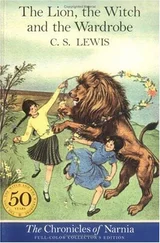
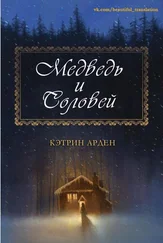

![Кэтрин Арден - Мертвые голоса [litres]](/books/389907/ketrin-arden-mertvye-golosa-litres-thumb.webp)
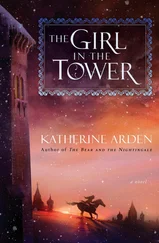
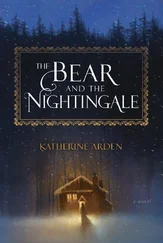

![Кэтрин Арден - Девушка в башне [litres]](/books/415518/ketrin-arden-devushka-v-bashne-litres-thumb.webp)
